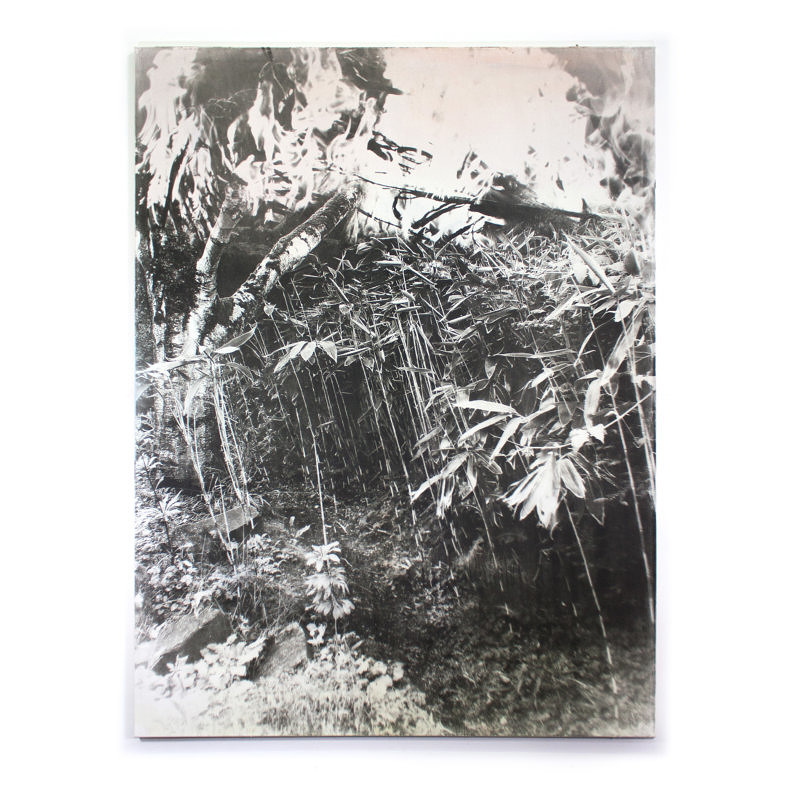
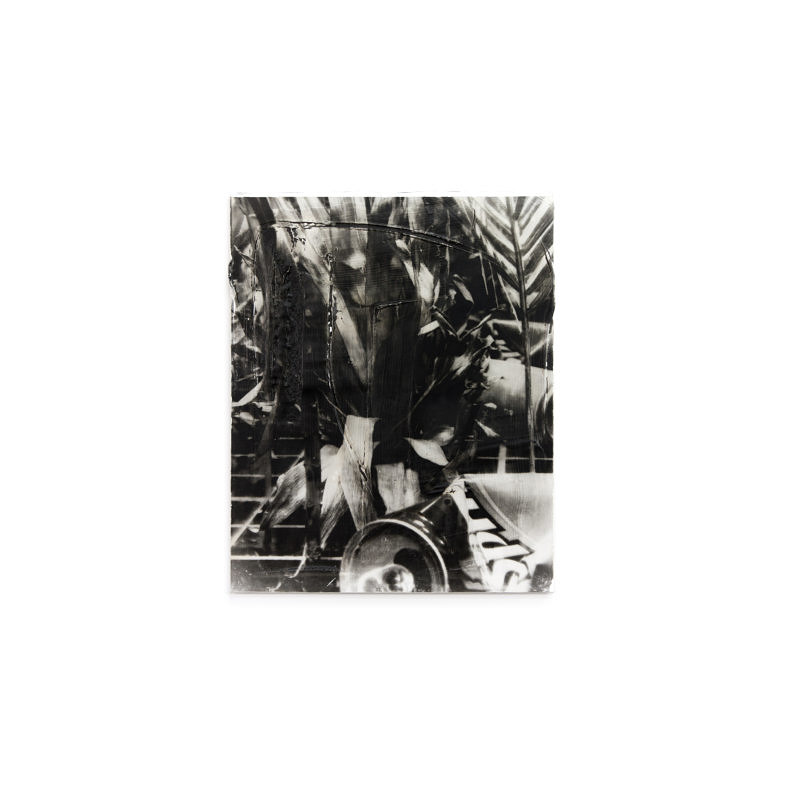
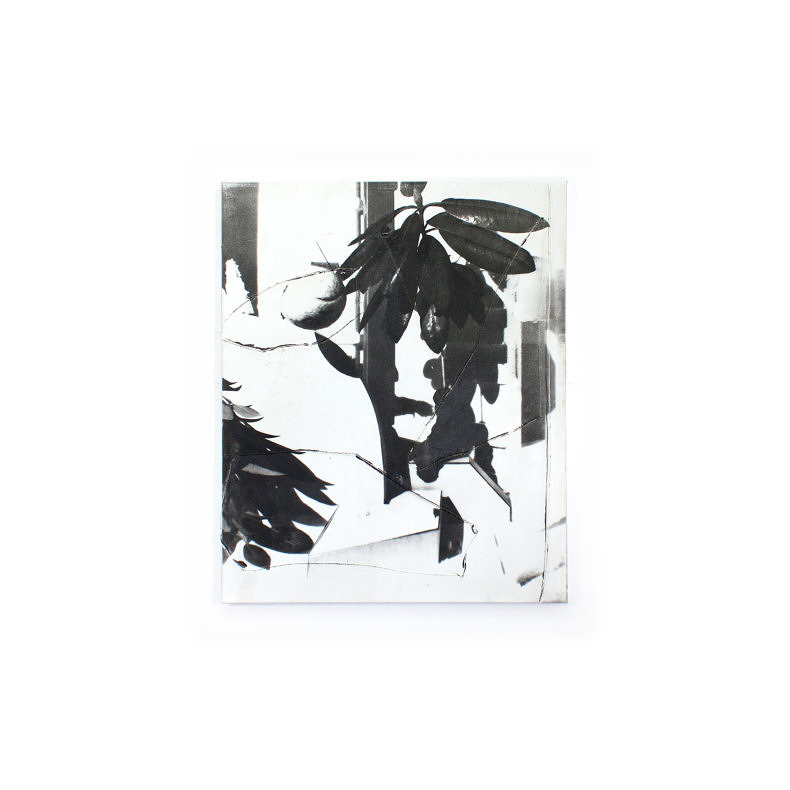
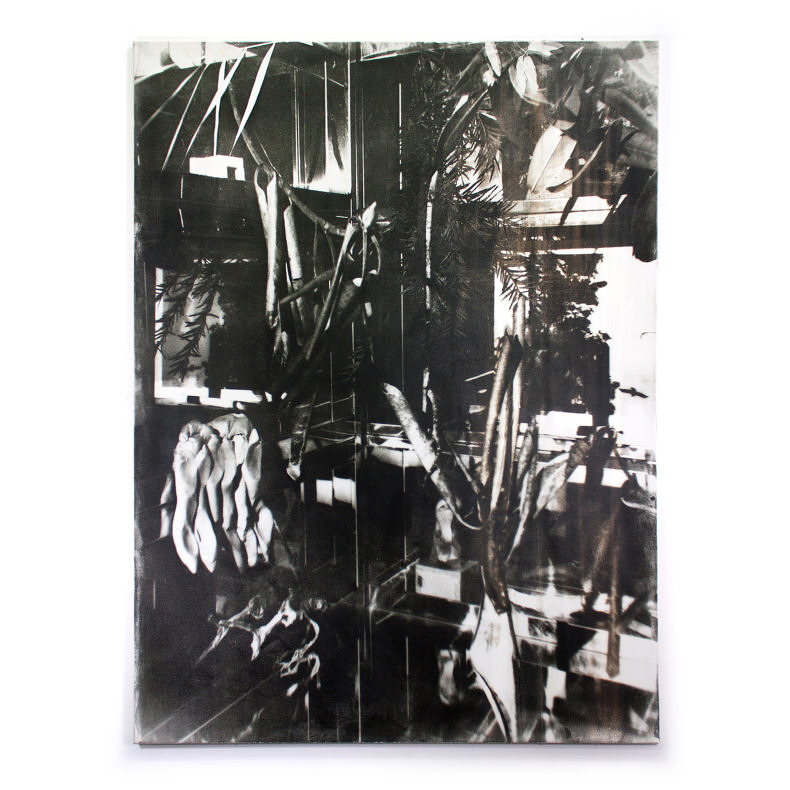
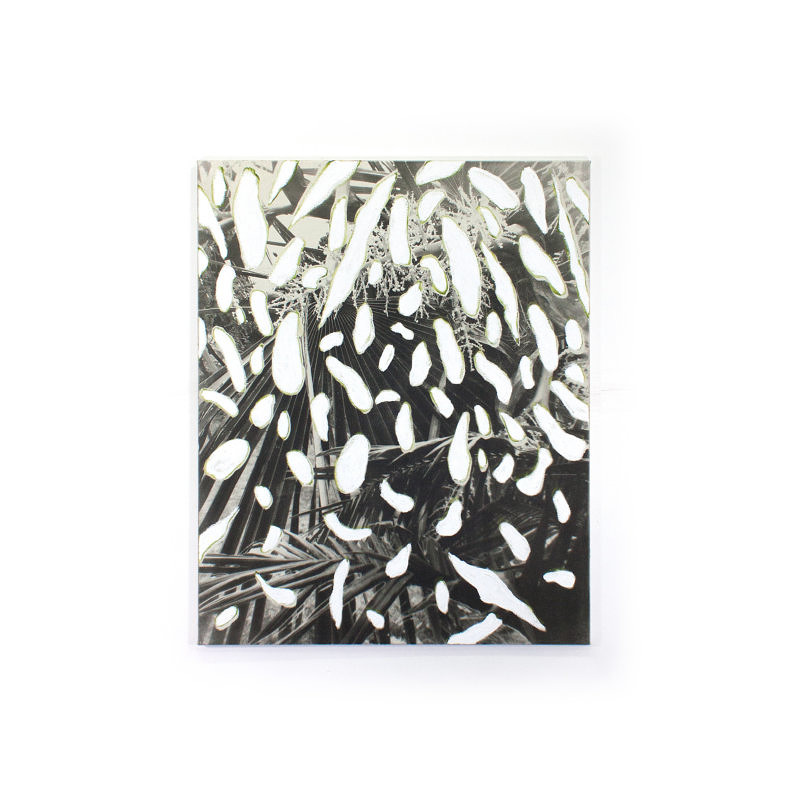
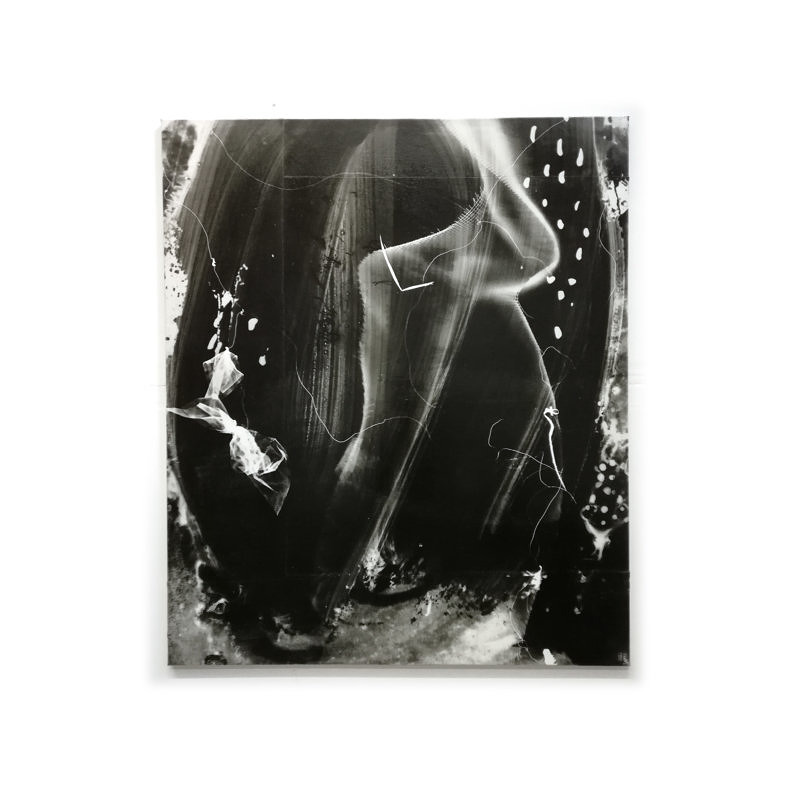
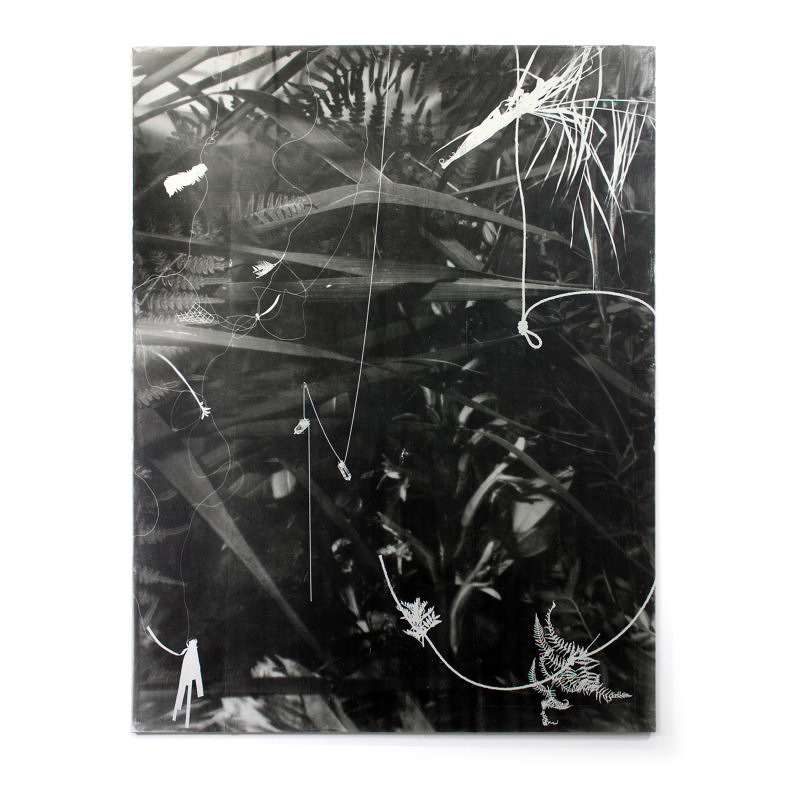
Painting, collage, and photogram are just a few of the ways one might characterize Jansoch Jauch’s work, and even so it wouldn’t be sufficient. One has to concede that he creates a homogenous body of work using a conglomeration of different, interwoven genres and techniques and presents them on a canvas, even though they still cannot simply be described as paintings.
Each work begins with an installation. Here, palm tree leaves cover sculptures made of rough, slatelike pieces of wood that are coarsely held together. Amorphous clay sculptures intersect remnants of industrial manufacturing—evidence of our Western civilization—between and partially obscured by leaves and blossoms. Surrounded by mirrors, these installations become stages that present and depict a maze of fixed and moving, circumspect forms. The artist uses photography and digital editing to deprive these stages of their actual multidimensionality. Strokes, lines, and drawings are woven into the occurrences on stage during the digital editing process. At the same time, he creates large-format canvases partly consisting of varied materials, partly of the same fabric. Common to all of them are, nevertheless, the seams. They are sometimes fine and delicate like filagree drawings and sometimes raw and coarse like a gash that lends height and depth to the otherwise level surface.
The actual work is produced through the process of bringing together photographic images of the installations, digital interventions, and physical surfaces using photographic silver emulsion. This layering leads to a symbiosis of all of these production steps and thus to a work that, despite its diverse forms and materials, has become an image that is equally determined by all the techniques that went into its formation. The initial chaos of the miniature stages and the co-joined pieces of canvas gives way to a new and larger stage, on which a harmonious coexistence of all these individual elements is enacted. The motifs do not emerge from painterly gestures so much as the superimposition of different layers—both in the sense of production and in the sense of content.
It is Janosch Jauch’s intention to create a homogenous work that treats all of its component parts equally and without distinction. His works should be read independently of genre or medium and their associated modes of viewing. It is about a free and unrestricted avenue of communication between the work and the viewer.
F. Schulz Pitsch
All images ©Janosch Jauch